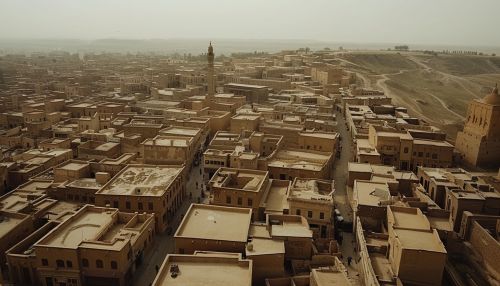Urban Architecture
Introduction
Urban architecture, also known as urban design, is a multidisciplinary field that involves the arrangement, appearance, and functionality of towns and cities. It encompasses the design of buildings, public spaces, transport systems, and the overall layout and functionality of urban areas. This field is closely related to urban planning, landscape architecture, and civil engineering.
History of Urban Architecture
Urban architecture has a long history, dating back to the earliest human settlements. The first examples of urban architecture can be seen in ancient civilizations such as the Indus Valley and Egyptian civilizations, where cities were planned and built with a high degree of sophistication.


During the medieval period, urban architecture evolved with the development of castles, fortifications, and the layout of medieval towns. The Renaissance period brought a renewed interest in classical architecture and urban design principles, leading to the creation of planned cities and architectural masterpieces.
The Industrial Revolution had a significant impact on urban architecture, with the rapid growth of cities and the introduction of new materials and construction techniques. This period saw the rise of the modern architecture movement, which sought to break with traditional architectural styles and embrace new technologies and materials.
In the 20th century, urban architecture was influenced by various architectural movements such as brutalism, postmodernism, and deconstructivism. These movements sought to redefine the relationship between form and function in urban design, leading to the creation of innovative and sometimes controversial architectural designs.
Principles of Urban Architecture
Urban architecture is guided by several key principles. These include:
- Functionality: Urban architecture must meet the needs of its inhabitants. This includes providing adequate housing, transportation, and public spaces, as well as ensuring that the city is accessible and easy to navigate.
- Sustainability: With the increasing awareness of environmental issues, sustainability has become a key principle in urban architecture. This involves designing cities in a way that minimizes their environmental impact, through measures such as energy-efficient buildings, sustainable transport systems, and the use of green spaces.
- Aesthetics: The appearance of a city is a crucial aspect of urban architecture. This involves the design of individual buildings, as well as the overall layout and appearance of the city.
- Social Equity: Urban architecture should promote social equity, by ensuring that all residents have access to essential services and public spaces. This can involve measures such as affordable housing, accessible public transport, and the provision of public spaces that are open to all.
Urban Architecture Today
Today, urban architecture is a dynamic and evolving field. It is influenced by a range of factors, including technological advances, changing social attitudes, and environmental concerns. Key trends in contemporary urban architecture include the increasing emphasis on sustainability, the use of digital technologies in design and construction, and the focus on creating inclusive and livable cities.


Urban architecture also faces several challenges. These include the need to accommodate rapid urbanization, the impact of climate change, and the need to create cities that are resilient and adaptable to future changes.
